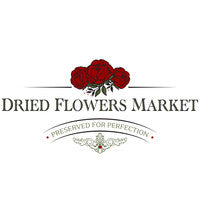Description
COMMON NAME Standardized: calendula petals Other: marigold, pot marigold
BOTANICAL NAME Calendula officinalis Plant Family: Asteraceae
OVERVIEW
Calendula petals is a well-known medicinal herb and uplifting ornamental garden plant that has been used therapeutically, ceremonially, and as a dye and food plant for centuries. Most commonly known as for its topical use as a tea or infused oil for wounds and skin trauma, the bright orange or yellow flower contains many important constituents and can be taken internally for a variety of ailments.
BOTANY
Annual herb bearing the characteristic daisy-like flowers of other members of the Asteraceae family, having bright orange or yellow terminal flower heads and pale green leaves. Native to Southern Europe, Egypt, the Mediterranean, and in the region spanning the Canary Islands to Iran, calendula is now naturalized in much of the world and is commonly grown in gardens. A variety of other Asteraceace genera have been commonly called "marigold" including Tagetes erecta, T. minuta, T. lucida, Baileya multiradiata, and Dyssodia pappossa, yet they have different properties. However, a related wild species, C. arvense, may have similar therapeutic properties. Calendula petals is said to be in bloom on the "calends" of every month, hence the name. The "calends", or in Latin "kalendae" referred to the first days of each month of the Roman calendar and signified the start of the new moon cycle. And the common name derives from an association with the Virgin Mary as this flower, or the similar looking flower, Tagetes sp., was used in various religious festivals and referred to as "Mary's gold".
HERBAL ACTIONS
Antispasmodic, astringent, cholagogue, diaphorhetic, vulnerary, lymphatic, emmenagogue, cholagogue, hepatic
USES AND PREPARATIONS
Dried flower as a tea, tincture, or infused oil. Marigold is also used as ingredients in soaps, bath bombs and potpourri
CONSTITUENTS
Triterpene glycosides and aglycones, carotenoids, essential oils, resin, sterols, flavanoids, calendic acid
PRECAUTIONS
Specific: Persons with allergies to other members of the Asteraceae family (such as feverfew, chamomile, or Echinacea species) should exercise caution with calendula, as allergic cross-reactivity to Asteraceae plants is common.
General: We recommend that you consult with a qualified healthcare practitioner before using herbal products, particularly if you are pregnant, nursing, or on any medications.

